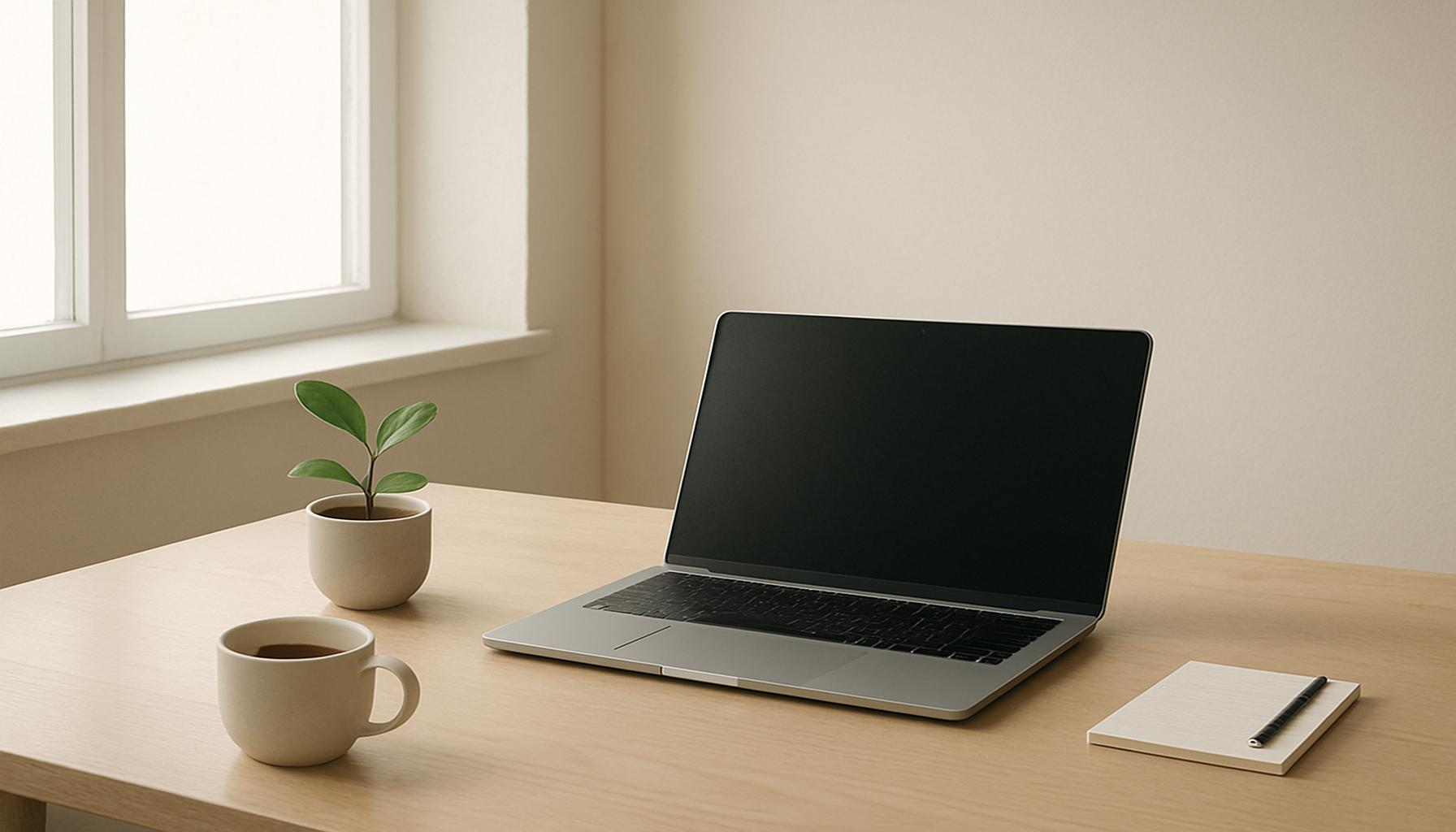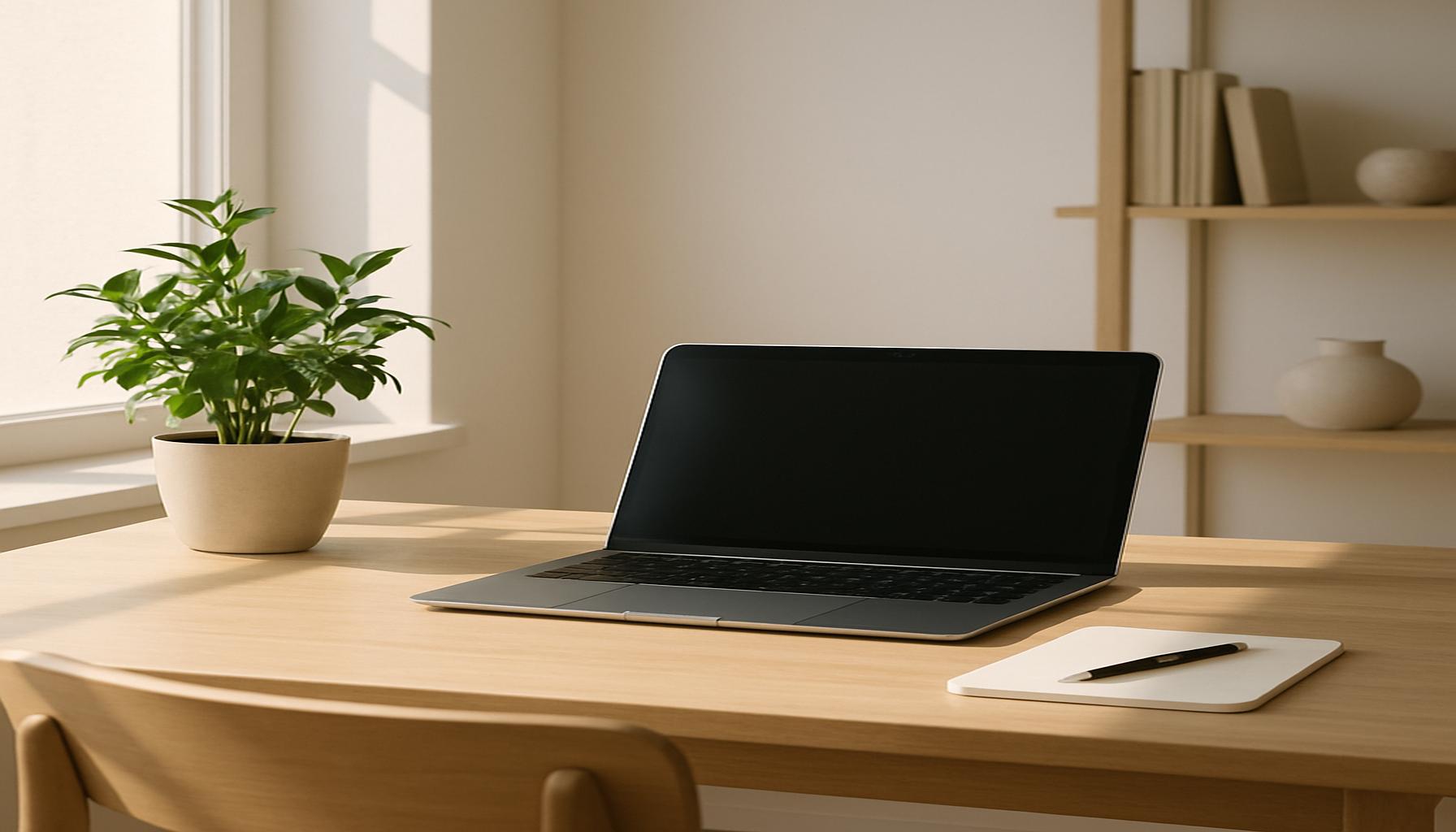Deconstructing Multitasking: How Minimalism Helps Focus on Priority Tasks

Understanding the Myth of Multitasking
In our increasingly demanding world, multitasking is often celebrated as a badge of honor, a sign of one’s ability to juggle numerous responsibilities simultaneously. However, research paints a different picture. Numerous studies indicate that managing multiple tasks at once can detract from overall efficiency and the quality of output. The American Psychological Association reports that multitasking can actually increase the time taken to complete tasks by up to 40%. This alarming statistic underscores a crucial reality: multitasking may not only be ineffective but also counterproductive.
The Minimalism Approach
On the other hand, minimalism provides a powerful alternative to the chaos of multitasking. This approach advocates for simplifying one’s life, enabling individuals to focus on what truly matters. Embracing a minimalist mindset brings with it several significant benefits, such as:
- Reduced distractions: Clearing your workspace of unnecessary items fosters an environment where focus can thrive. For example, a study found that employees in organized workspaces are 50% more productive than those in cluttered settings.
- Increased clarity: When we simplify our tasks and obligations, we gain clarity on our priorities. This means consistently choosing to focus on high-impact activities rather than spreading ourselves too thin across multiple less important tasks.
- Enhanced productivity: Minimalism supports a deep work approach, which is centered around intense focus on single tasks. This methodology can lead to greater achievement in less time. A study from Cal Newport, author of “Deep Work,” suggests that focusing deeply for just a few hours can yield results equivalent to multiple uninspired hours of multitasking.
The challenge of maintaining focus is accentuated by the prevalence of digital devices and incessant notifications that distract us throughout the day. In this context, adopting a minimalist lifestyle can serve as a powerful remedy, guiding individuals in navigating the digital chaos and reclaiming their attention. By eliminating excess and prioritizing essential tasks, people can redefine productivity in a way that aligns with their personal and professional aspirations.
Shifting Perspectives
The relationship between minimalism and productivity deserves deeper exploration, especially in light of the common pitfalls associated with multitasking. By understanding the transformative impact of minimalism, individuals can discover valuable strategies to prioritize tasks meaningfully. For instance, implementing a “single-task” approach in your daily routine can produce a profound shift in work quality and efficiency. Building structured time blocks for focused work may empower you to accomplish more while feeling less stressed.
Ultimately, cultivating a minimalist perspective can enrich one’s life and redefine accomplishments beyond traditional views of productivity. The journey towards minimalism can unlock not only heightened efficiency but also a more satisfying and purpose-driven existence.

DISCOVER MORE: Click here to enhance your productivity
The Silent Productivity Killer
As we navigate our chaotic lives, it is easy to fall into the trap of multitasking. The allure of ticking off numerous tasks simultaneously often overshadows the detrimental effects it can have on our cognitive functions. Research by the Stanford University revealed that multitaskers may struggle to focus and have lower productivity than their single-tasking counterparts. This cognitive overload not only saps mental energy but can also lead to mistakes that require additional time to correct. Thus, multitasking is more than a mere inconvenience; it is a significant barrier to true productivity.
The Power of Focused Simplicity
In stark contrast to this mental juggling act, adopting a minimalist approach can profoundly reshape our productivity landscape. Minimalism, in this sense, is not just a design aesthetic but a mindset shift that encourages individuals to eliminate unnecessary distractions and streamline their daily activities. A minimalist lifestyle promotes the idea of engaging fully in one task rather than spreading attention across many.
When we subset our obligations to focus only on the most significant tasks, we unlock several advantages:
- Improved Quality of Work: Concentrating on a singular task allows for deeper engagement and creativity, often leading to enhanced output quality. A study conducted by the University of London found that focusing on a single task can lead to a 20% increase in performance.
- Time Efficiency: By dedicating undivided attention to a high-priority task, one can complete it more rapidly, ultimately freeing up time for other endeavors. This focused approach encourages a strategic evaluation of how time is allocated across daily responsibilities.
- Greater Satisfaction: Completing tasks thoroughly and effectively fosters a sense of accomplishment, which can positively impact overall well-being. Minimalists often report feeling less stressed and more content with their choices.
Furthermore, minimalism can act as a buffer against the incessant distractions that plague our modern world. In an age dominated by notifications and digital distractions, eliminating clutter—both physical and mental—can dramatically improve our ability to concentrate. By intentionally reducing the number of tasks clamoring for our attention, we create a space for focused productivity that aligns with our most crucial goals.
Escaping the Multitasking Trap
The allure of being perpetually busy can cloud judgment, making it difficult to recognize when multitasking has become counterproductive. By embracing minimalism, individuals can undergo a paradigm shift, radically redefining what it means to be ‘productive.’ This transition involves not only decluttering our schedules but also re-examining our motivations and re-prioritizing our commitments. Engaging with a minimalist framework challenges us to ask: what truly deserves our time and energy?
In this journey towards heightened focus and renewed purpose, the transformative power of minimalism can illuminate pathways to enhanced productivity, proving that sometimes, less truly is more.
Understanding the Essence of Minimalism in Tackling Multitasking
In an age where our attention is constantly divided among various tasks and devices, the concept of minimalism emerges as a beacon of clarity. Deconstructing Multitasking reveals that by prioritizing simplicity, we can significantly enhance our ability to focus on what truly matters. Embracing a minimalist approach means stripping away distractions and unnecessary tasks, allowing us to hone in on our core responsibilities. This mindset shift cultivates deeper engagement with priority tasks, fostering not just productivity but also a sense of fulfillment.
The Psychological Impact of Minimalism
Psychologically, minimalism has profound effects on our cognitive functions. Research indicates that when surrounded by clutter or overabundant choices, decision fatigue sets in, diminishing our capacity to make effective choices. By contrast, a minimalist environment enhances mental clarity, paving the way for focused and deliberate actions. This dynamic is particularly beneficial for individuals juggling multiple responsibilities, as it underscores the importance of aligning our actions with our highest goals.
Minimalism in Daily Practice
Integrating minimalism into our daily routines can be a transformative process. Techniques such as the Pomodoro Technique, which encourages short bursts of focused work followed by brief breaks, exemplify how we can manage our time effectively. Additionally, decluttering both our physical and digital spaces is critical; a streamlined workspace stimulates clearer thought processes. Regularly assessing and prioritizing tasks using methodologies like the Eisenhower Matrix can also aid in discerning what is genuinely urgent versus what is merely an interruption.By incorporating these minimalist strategies, we can effectively combat the pitfalls of multitasking and refocus our energies on tasks that yield the most significant results, ultimately narrowing our efforts toward true productivity. As we explore the relationship between minimalism and productivity, it becomes clear that a prioritization of essential tasks is not only beneficial but necessary in this hyper-connected world.
DISCOVER MORE: Click here to streamline your digital life
Strategies for Implementing Minimalism
While the merits of minimalism in combating multitasking are compelling, the practical application of this philosophy can feel overwhelming. Fortunately, there are manageable strategies that individuals can employ to streamline their tasks and enhance their focus. These approaches not only promote minimalism in their daily routines, but they also actively cultivate a more productive mindset.
Prioritization through the Eisenhower Matrix
A powerful tool for embracing minimalism is the Eisenhower Matrix, a decision-making framework that categorizes tasks into four quadrants based on urgency and importance. This method encourages individuals to clarify their priorities and focus on what truly matters. By formulating a clear distinction between tasks that are important versus those that merely feel urgent, one can eliminate time-consuming distractions and devote energy to high-priority objectives. For instance, instead of responding to every email immediately, one can identify tasks that align with their larger goals and concentrate on those first, thereby avoiding the detrimental effects of multitasking.
Setting Boundaries with Time Blocks
Another effective strategy is the implementation of time blocking. This technique involves dedicating specific intervals to work on designated tasks, which ensures that individuals focus solely on one activity at a time. By creating strong time boundaries, individuals can resist the temptation to juggle multiple projects and instead channel their energies toward a singular focus. It can be particularly effective when integrated with methods such as the Pomodoro Technique, where work intervals are followed by short breaks, allowing mental rejuvenation while maintaining focus.
Cultivating a Minimalist Workspace
Physical environment plays a critical role in how we manage multitasking. A clutter-free workspace can drastically reduce distractions and foster an atmosphere conducive to concentration. Minimalist design principles advocate for fewer visual distractions, meaning that a simple workspace—devoid of unnecessary gadgets and clutter—can significantly boost one’s ability to focus. Individuals may consider redesigning their workspaces by keeping only essential tools and limiting digital distractions, such as app notifications, ensuring that they can maintain an unwavering focus on their tasks.
Mindfulness and Intentionality
Integrating minimalism into one’s productivity routine also requires cultivating a mindset of mindfulness and intentionality. By engaging in regular mindfulness practices, such as meditation or deep-breathing exercises, individuals can create mental space to prioritize tasks effectively. Research indicates that mindfulness can enhance cognitive flexibility and attention, making it easier to resist the pull of multitasking. Approaching each task with intention, one can dedicate their full attention to the work at hand, fostering higher quality outcomes.
In essence, the embrace of minimalism as a strategy against multitasking opens new avenues for productivity by encouraging purposeful engagement with our tasks. By prioritizing, setting boundaries, creating an ideal workspace, and practicing mindfulness, individuals can develop a solid foundation for maintaining focus on what truly matters in their personal and professional lives.
DIVE DEEPER: Click here to simplify your online life and enhance productivity
Conclusion: The Path Forward
In a world increasingly defined by distractions, deconstructing multitasking through the lens of minimalism offers a refreshing perspective on productivity. As we have explored, the chaotic nature of juggling various tasks not only dilutes our focus but also hampers overall effectiveness. By embracing minimalism, individuals can significantly enhance their ability to concentrate on priority tasks, leading to greater satisfaction and achievement.
Implementing strategies such as the Eisenhower Matrix, time blocking, reorganizing workspaces, and adopting mindfulness practices provide practical, structured ways to minimize distractions and clarify our priorities. Each approach lays the groundwork for a more intentional, focused work ethic, one that values depth over breadth. This is especially crucial in today’s fast-paced workplace, where a culture of constant connectivity often leaves us feeling scattered and unproductive.
As we move forward in our quest for productivity, we must challenge the ingrained belief that multitasking is synonymous with efficiency. Instead, we should recognize that true effectiveness lies in our ability to prioritize, allocate our time wisely, and cultivate environments that foster concentration. By adopting a minimalist mindset, we can take control of our tasks, strengthen our focus on what genuinely matters, and ultimately enhance our productivity. Taking the first step toward minimalism might seem daunting, but the rewards—improved focus, increased productivity, and a sense of accomplishment—are certainly worth the effort.


